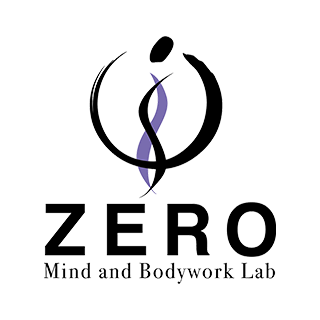Introduction
Hello, I’m Hidefumi Otsuka, offering Rolfing® sessions in Shibuya, Tokyo.

Rolfing is a method that works with the body’s posture and structural alignment, but its influence goes beyond the physical dimension. It deeply affects the quality of relationships—how we connect with others and how we relate to ourselves.
The foundation of this sense of connection lies in Attachment.
This series explores the relationship between attachment and the body, shedding light on the potential of Rolfing from various perspectives.
When the body’s structure and movement change through Rolfing, the sense of safety residing in the nervous system can be restored, enabling the reconstruction of attachment patterns.
In this second installment, we will explore the relationship between trauma and attachment, drawing on the approach of Somatic Experiencing (SE).
SE is a nervous system-based trauma therapy developed by Peter Levine, who was also a Rolfer. This approach, which emphasizes the importance of listening to bodily sensations, offers important insights for repairing attachment wounds.
Note: I am not an SE practitioner. If you’re interested in SE, please seek out a certified SE practitioner. I studied the principles of SE during my Rolfing training, and those principles have significantly influenced my current sessions. This article is written from that perspective.
Trauma Is not the Event, but the Reaction to the Event
多Many people think of trauma as a painful event from the past. However, Peter Levine, the founder of SE and a Rolfer, says:
“Trauma is not what happens to us, but what we hold inside in the absence of an empathetic witness.” — Peter Levine, In an Unspoken Voice
In other words, trauma is the uncompleted responses that remain unresolved within the body. These affect the autonomic nervous system, making the past feel as if it is recurring in the present.
Attachment Trauma and Developmental Trauma: Differences and Overlaps
In Rolfing sessions, I often encounter clients who are affected by the following forms of trauma:
- 🧸 Developmental Trauma: A prolonged lack of safety, consistency, and connection in early attachment relationships.
- 💥 Shock Trauma: A freeze response triggered by a single intense event such as an accident, surgery, violence, or disaster.
In particular, developmental trauma often brings fear or distrust toward connection, help-seeking, and even being touched.
This is closely related to the “dorsal vagal dominance (shutdown)” described in Polyvagal Theory, which we discussed in the previous post.た、ポリヴェーガル理論における「背側迷走神経優位(シャットダウン)」の状態と密接に関係している。
Key SE Concepts: Resource and Pendulation
SE does not dive into trauma all at once. It emphasizes proceeding gradually while confirming safety and available resources.
- 🌱 Resources: People, objects, memories, or bodily sensations that bring a sense of safety
- 🔁 Pendulation: Gently swinging between safety and discomfort, like a pendulum
- 🧘♀️ Titration: Touching sensations in small doses to avoid overwhelm
“If you touch into the trauma vortex too strongly, the system will become overwhelmed. If you go too slowly, there is no change. You have to find the edge.” — Peter Levine
These principles can be applied directly to Rolfing sessions.
Client’s Experience: Unraveling Body and Emotions Together
One client began to talk about a past trauma during a session, and immediately reported pain in their chest and the right side of their head.
“Talking about this suddenly makes it hurt here,” they said, anxiously holding their chest and head. This was a clear sign of nervous system hyperarousal.
I guided the client to reorient toward a sense of safety:
“Let’s look around the room and find something that feels calming—a plant, a source of light, or a fabric.”
They slowly moved their eyes and settled their gaze on a plant.
Then, I focused structurally on the thorax and neck, supporting their breathing and upper body mobility with gentle Rolfing work.
After a while, the pain subsided. Their breathing deepened naturally, and their whole body calmed down.
“Maybe this is what it means to have a safe place,” they said, their expression softening.
The Role of Rolfing: Creating a Safe Body Through Structure
Rolfing supports the restoration of neuroception—the nervous system’s perception of safety—through fascial and structural adjustments.
It shares several principles with SE:
- 👣 Reclaiming grounding through the feet and pelvis
- 🌬️ Supporting thoracic mobility and breathing rhythm
- 🧱 Re-experiencing safety through neutral, empathetic touch
- 🧠 Honoring felt sense and attuning to the present moment rather than past stories
Conclusion: Meeting Unfinished Responses in the Present
Rolfing does not aim to force a re-experience of the past. Instead, it prioritizes helping clients regain a sense of safety in the present moment.
More than the events themselves, attention is given to the bodily responses that still persist.
Through structure, sensation, touch, and breath, Rolfing supports the client’s process of reconnecting with themselves.
Coming Next:
Part 3: Attachment Can Be Rewritten — Relational Repatterning
In the next post, we will explore how attachment styles can shift, drawing on the ideas of Diane Poole Heller, who integrated SE with Attachment Theory. We will reflect on how relationship patterns and boundaries can be repatterned through Rolfing.
Stay tuned.

